The most important trends from CES 2019
Last week the Unruly team descended upon Las Vegas, along with some of the biggest tech companies and enthusiasts from across the world for CES 2019.
This year the show had more than 4,500 exhibitors sprawled across 2.7 million square feet! To save you from trolling through thousands of tweets, company announcements and press releases, our Futurist, Elena Corchero, has condensed the show’s biggest and most innovative news into 11 key trends that sum up this year’s show, and are important for the advertising industry to be aware of.
#1 Keep your eyes off the road
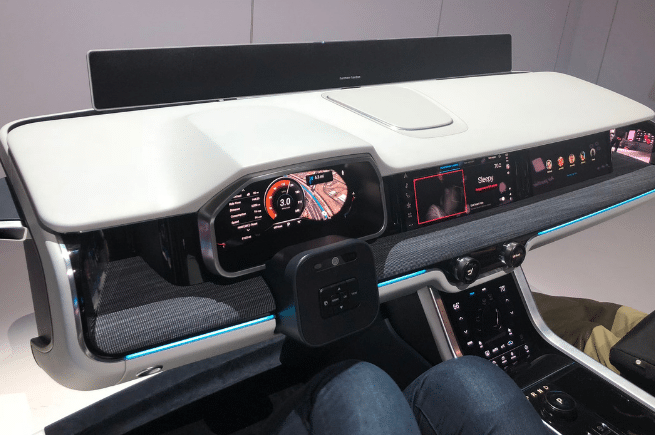
Autonomous cars are nothing new but there was an entire hall dedicated to them this year. Flying cars are also coming (Back to the Future was only 4 years late!), and Uber showed off a prototype for their new air taxi.
Kia announced it’s using bio-signal recognition technology and AI to read drivers’ moods. This could be a safety precaution as well as an opportunity for brands, as real-time emotions can be tracked through cameras, detecting if someone is sleepy or sad.
Ford launched an SDK to compete with Android Auto and Apple CarPlay, opening up new opportunities for news and entertainment brands. As well as this, Amazon announced alongside the show that there have been over a million pre-orders of their new Echo-Auto product, hinting at just how big this market will be in the future.
When 5G becomes widely available it will enable greater data synchronization on the go, giving rise to in car handy and affordable voice adapters such as the Anker Roav Bolt, which gives anyone access to a 24/7 personal assistant.
In other news Byton (China’s response to Tesla) announced an electric SUV with a four foot wide(!) “Shared Experience Display” with screens literally everywhere, and Disney and Audi announced a new partnership. They are working on bringing VR to cars, to help keep kids entertained on long trips. Could this finally be the environment that brings VR to the masses?
Why should we care? Well, to put it simply, driving will never be the same. Where drivers once needed to dedicate attention to the road, other vehicles and pedestrians, they will soon be able to work, consume news or entertainment, or get some well needed rest instead. Media organizations will need to consider how to have relevant content at passengers’ fingertips, as well as be at the forefront of the hardware side. The arrival of 5G will facilitate this increased data usage and keep us even more connected on the go.
#2: Personalisation and the quantified self
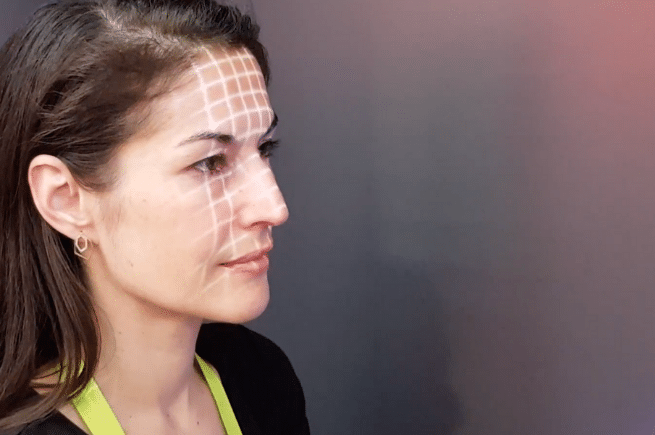
For bespoke beauty tech, anything goes! From printing your own nail art with the Funai printer, to getting skin care advice from AI. Brands are using AI and facial recognition, like the awarded Lumini, to provide personalised beauty and health recommendations for consumers.
P&G launched several new connected beauty and healthcare products at CES 2019 to make consumer’s lives easier. Including Olay’s Skin Advisor platform, which uses AI to provide personalised skincare analysis and recommendations by analyzing selfies and a short questionnaire.
We also saw Opté Precision Skincare System combine camera optics, proprietary algorithms, printing technology and skincare in one device that scans the skin, detects hyperpigmentation and applies corrective serum with precision application to reveal the natural beauty of skin.
Access to technologies for our health and the quantified self are growing in new directions that go well beyond current wearables and biometrics. Some highlights were XRblood, a connected home blood testing kit, OralB’s toothbrush that can analyse your saliva, and Testcard, a device which analyses your urine to determine your health. Merge these technologies with the growing trend of smart toilets like TOTO, or pets versions like Inubox and Lavviebot, and consumers will soon be self-testing at home, generating extremely personal and valuable data sets.
We’ll even be uploading data while we sleep! With so much screen time and the rise of glasses, it is time to look after our exhausted eyes and minds. One of the fastest growing areas of health tech is sleep monitoring, including brain patterns monitoring from companies like Dreem and Urgonight. No time for a nap? We experiences the Tripp headset, which is a VR experience to help people chill out in a busy world.
Why should we care? Lifestyle titles could assist consumers in a more personalised way. In the health space, if consumers are willing to share health information, media organisations could then serve them relevant editorial content. For example, if a blood test shows someone has diabetes. or a urine test shows someone is pregnant they could be served with content on healthy eating or managing sugar intake.
This could change customer perceptions of the line between amazingly relevant, personalised ads and plain creepy. Thinking about the mindfulness applications of VR, an emotions-as-service could be a huge opportunity for brands.
#3: You’re talking my language
The digital nomad generation is growing and soon language will no longer be a barrier. Through Google Assist’s interpreter mode, two people who speak different languages can use AI powered technology to have a seamless conversation. Google can now translate voice into 27 different languages! The tech giant is also working with Disney to bring books to life using a combination of voice and AI.
Whilst the number of smart speakers in households continues to grow, (78% in a year) a billion devices now work with Google assistant, which is up from 400 million last year. Amazon’s Alexa, meanwhile, is reportedly on more than 100 million devices. However 2019 may be the year smart speakers start to decline, as assistants are being integrated into everything from pet feeders to toilets.
Despite voice becoming ubiquitous, it’s worth mentioning there is a sense of déjà vu with voice applications. There are parallels to the rush to create mobile phone applications that never got traction (on average we have 48 apps and use 8 on a daily basis). In the last two years, Alexa skills have gone up from five thousand to sixty thousand. A degree of healthy cynicism should be applied when thinking how to best approach this opportunity.
Why should we care? We also need to ask ourselves what the long term impacts are on the evolution of language (or a global language), as voice continues to drive the tectonic shift away from text based communications.
#4 G Whizz
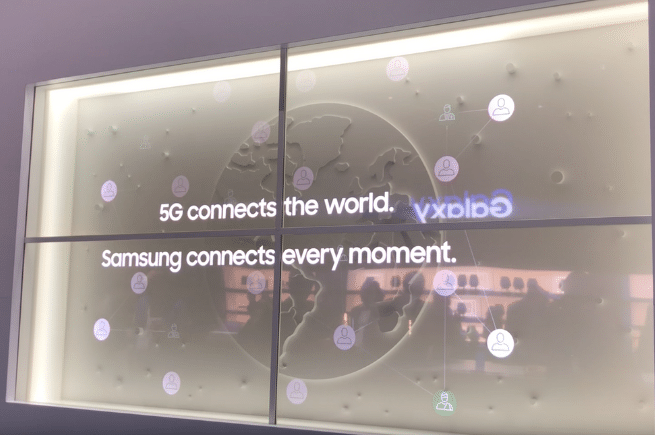
2019 marks the dawn of 5G which will significantly reduce download times and allow instant synchronization of actions across devices, sensors and robotics. As CES is a few weeks before Mobile World Congress, there weren’t many consumer announcements in the mobile space (exceptions being Samsung, Telstra, AT&T, D-Link and Sprint). This year many of the conversations were focussed around how 5G will impact machine-to-machine technologies and the Internet of Things.
Why should we care? Huge improvements in connectivity will change consumer behaviour. We need to really think about two questions; what new content and services will 5G enable? And what will improved upload speeds mean for both media organisations and UGC?
#5: Screens and surfaces
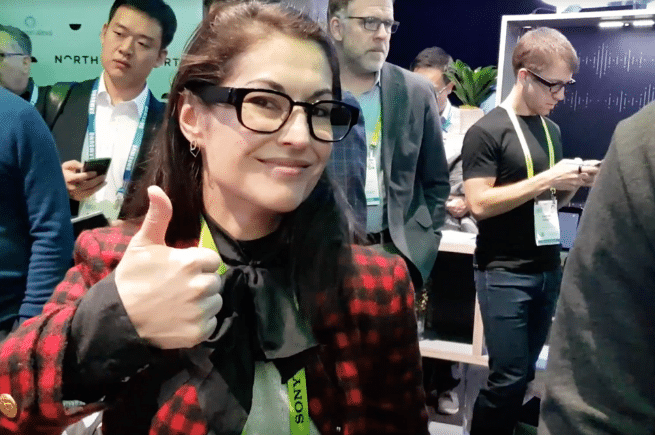
At first sight Mui appears to be a standard piece of wood, but when touched it lights up and activates Google assistant. This is the start of smart building materials. Before we needed an external device to control you appliances. Now it can be done through walls or a wooden floor (BBC). Despite the growth of voice, instant access to visual notifications and entertainment are more omnipresent and immersive than ever. These appeared in a variety of surfaces at CES 2019, including transparent and flexible displays with a sense of fluidity over our surroundings. Any surface can be used as a canvas. From Modular TV panels that can be configured by the user, to flexible screens like LG’s ‘curve of nature’ which is a TV that can be rolled up like a yoga mat!
Smaller flexibles were also seen in the form of Samsung’s foldable phone and the Royole FlexPai fablet that can fold in half. Transparent screens, smart mirrors and even door handles with infographics were also all on show.
We finally have stylish Smart glasses in the form of Focals and Norm. However driver displays in cars took centre stage this year, represented by devices like Ahead by Naver labs and Wayray with Hyundai. Full displays, known as cockpit car screens, were shown off in Byton’s super-sized display, supplied by China’s BOE Technology Group. The 2019 Mercedes EQC crossover featured two 10.25-inch displays behind a glass surface forming a free-standing screen. The Samsung cockpit was also an unexpected addition to the list. They were not all just for the luxury market either, Fiat Chrysler’s 2019 RAM 1500 truck boasts a 12-inch vertical display in its dashboard.
Why should I care? Screens will be ubiquitous. We need to consider what opportunities this could provide brands with to connect with people, and what sort of formats will be regarded as polite. As screens become more prolific, brands will need to be aware of the emotional impact their content will have. Smart brands will work hard to make emotionally aware content, served based on the mood of the viewer to match their emotional profile.
Facial Recognition is now an integral part of any decent smart mirror, allowing for greater personalisation. It’s important to know who, from a household, is using a screen to serve them the right content. It’s also worth noting that all this new screen technology will require a big upgrade in content and distribution capabilities ready for HDMI 2.1. Luckily 5G is here to help.
#6: Roll Up, Roll Up

Screens got flexible. LG showcased a high end (4K, OLED, 65”) TV that rolls back into its box when you’ve finished watching. LG and Samsung also showcased their latest app platforms and the software that’s being developed for them at CES 2019.
OTT adoption is accelerating and it’s a big pivot point, with everyone scrambling, buying, and partnering to come up with an OTT offering. On demand services are expected to overtake traditional TV in the next few years (source: eMarketer). Younger and early-adopting consumers have been the first to desert linear TV and will be a highly desirable audience for savvy marketers.
Why should we care? Roll-up TVs might sound like a novelty, but light-weight, flex tech could lead to more accessibility and connectivity. Major programmers will leverage exclusive content not currently available through streaming services and battles will be fought for sports sponsorship and major tent-poles. We’ll see the rise of niche content channels and we can also expect many new OTT entrants, specifically in the data and measurement area, as new protocols and standards continue to be agreed by industry constituents.
#7: Privacy went public and Apple stole the show
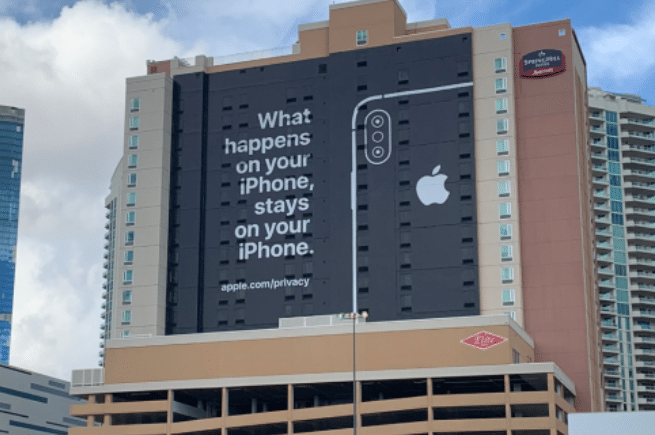
Despite famously and doggedly never exhibiting at CES, Apple generated much attention for their Vegas-themed privacy dig – was the ad a sign of things to come – wherefore art thou Siri? And IBM’s weather targeting announcement was overshadowed by privacy concerns.
Why should we care? Consumers are taking more control of their data. There’s an opportunity to use machine learning for a post IPT/post cookie world. In general, advertisers are demanding more solid proof-points on outcomes versus inputs, attribution on what is working and why. They are also looking at how this can be codified and applied at scale via programmatic; a fit for purpose digital ID would be the first step.
#8: Superconvience – tech with moves
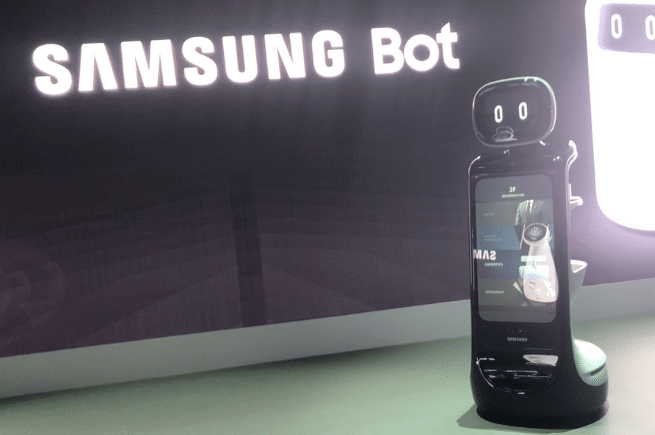
In the past you had to carry your devices. Today? Tech’s got the moves.
Sunflower announced a drone that will watch your house from the sky, providing bird’s-eye view security. At CES 2019 there was a growing trend towards technology autonomously following you around beyond portable and wearable tech. This was demonstrated through Samsung bots and Temi which will ensure we always have what we need wherever we are. Allowing us to focus on the things that truly matter. This trend was also seen in the Skydio self-tracking drone, and the Ovi self-driving suitcase that trundles alongside you at the airport! Both of these are likely to inspire other gadgets. Why carry stuff, when the stuff can move itself?
Why should we care? The potential in this area is about new perspectives. Surely self-following drones provide startling opportunities for news gathering and the coverage of live events, especially sports. However, recent security incidents at airports are likely to impact the rules around the future use of drones.
#9: Unthinkable partnerships
Despite being involved in all kinds of legal and patent fights, the big tech companies are starting to co-operate in response to consumer frustration. Apple is suddenly playing nice with other hardware brands including Samsung. Its new TVs now support AirPlay and iTunes. These are also available in cars. The move is notable because it illustrates an unusual willingness by Apple to open its technology to other companies, including competitors.
But Apple isn’t the only one suddenly on the lookout for new friends. Google is looking for collaborations with audio news partners and also joined Samsung TV to provide an alternative voice assistant, despite Samsung running its own AI and voice assistant, Bixby. This is a great win for Google and their assistant is now available on Sony, Hisense, Philips, TCL, Skyworth, Xiaomi, Haier, Changhong, JVC and Toshiba.
Google Maps is now voice enabled too, meaning that these features will be accessible through most cars, not just those using Android Auto, but via Apple CarPlay one could also reach Google. This shows how silently Google assistant could become the default for all. Currently Google’s is the only voice assistant to reach 100% understanding accuracy at the Loup Ventures test, and it has acquired Superpod to boost its assistant answering abilities. Thanks to this, Google assistant is now capable of checking in flights and booking hotel rooms.
In other news Intel and Alibaba partnered for Artificial Intelligence development, which could bring the competitive edge to China in its current trading situation.
Why should we care? Never underestimate a tech giant. Despite high profile setbacks with its mobile handsets, Samsung made a huge comeback with developments in Robotics and Health, assistive technologies such as exoskeletons, smart home technologies, car tech, mobile, 5G and the launch of their own smart speaker ‘Samsung Galaxy Home’, to grow their market share of Bixby voice assistant.
Frustration with the dupololy continues with advertisers seeking to diversify. There was also strong interest in Amazon, who probably stand to gain the most. Samsung Advertising had a big presence at the show, and AT&T/Xandr and Comcast were also everywhere. So still a battle to get the dollars shifting from the duopoly.
#10: Digisexuals and relatable robots
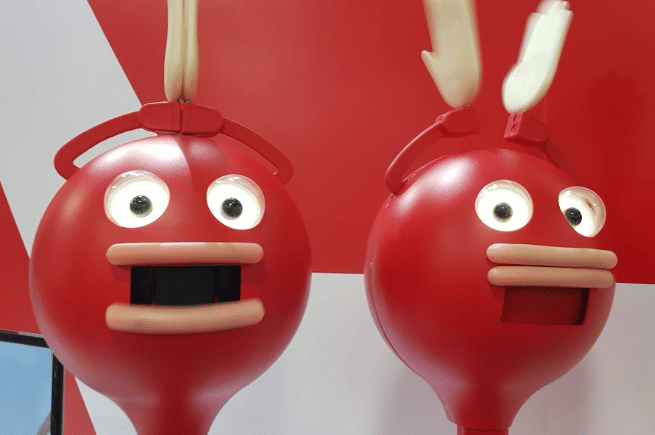
Sometimes, you just need a cuddle. As tech gets more personal, it was inevitable that people would start to emotionally connect with their devices: one man recently married a hologram! There was some controversy, and a huge debate on Twitter, when a sex toy for women was banned from CES 2019, despite previous shows exhibiting sex-related toys and experiences for men (including a VR experience in a local legal brothel). “We firmly believe that women, non-binary, gender non-conforming, and LGBTQI folks should be vocally claiming our space in pleasure and tech,” said a spokesperson.
Away from the more salacious side of robotics, the much more wholesome Lovot is a chick-like bot with large expressive eyes, flapping arms, wheels, and a wardrobe of clothes to cover its soft shell. A camera protrudes from its head, allowing it to map rooms and act as a child monitor or home surveillance device. The purpose of Lovot is not to be helpful or entertaining, but rather to engender joy, love and other positive emotions that might help owners reach their true potential. Several commentators suggest the time has come to welcome companion bots into our homes.
Why should we care? Ten years ago, most of us wouldn’t have dreamed of carrying a computer around with us in our pockets, so it feels believable that this intimacy could morph to closer emotional connections with devices and services. What might it mean to provide entertainment, support and companionship through increasingly personal technology? Do our brands (and sub-brands) have the remit to enter this space?
#11: Wake up and smell the opportunity
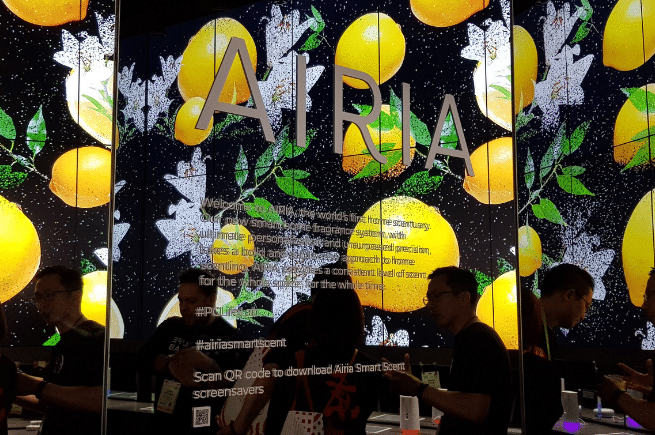
P&G launched a tool to scent your home at the touch of a button, and french company Sniffy, P&G Airia and Samsung launched a perfume blender to let you mix ingredients in a custom-made perfume. This follows on from Tiffany’s scented Christmas tree which was launched in December.
Air quality measurement was very prevalent at the exhibition, from devices that measured air quality in the home, to personal devices that could be worn outdoors. Well known brands such as Dyson and Samsung have been experimenting in the air quality space for some time.
Why should we care? The connected home is a playground that awakens all senses. How far away are we from the first scented digital ad?
Want more? Check out our predictions for CES 2019 to see how many came true!
